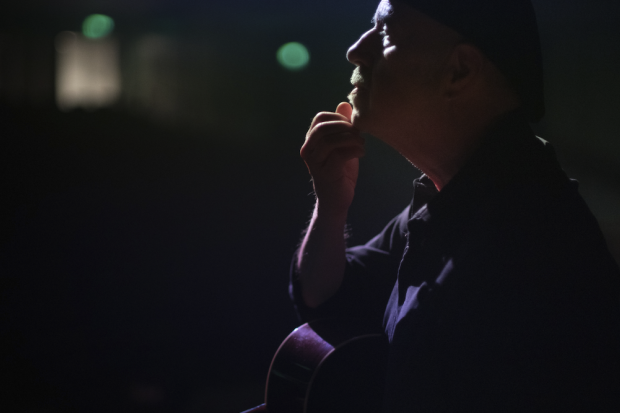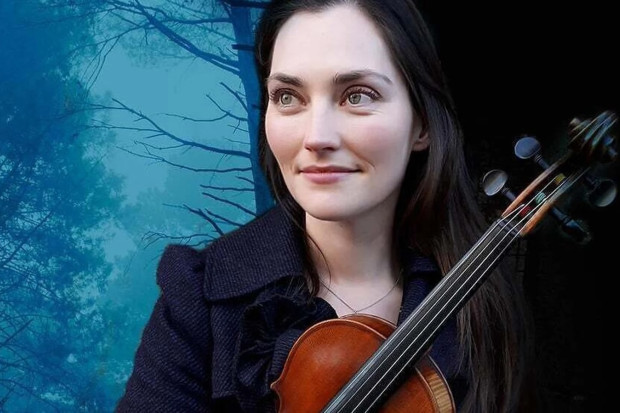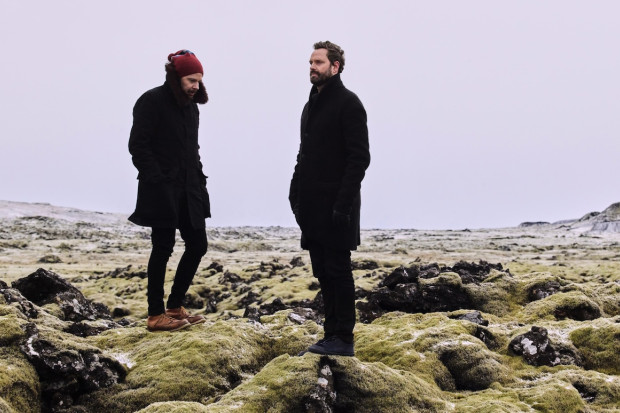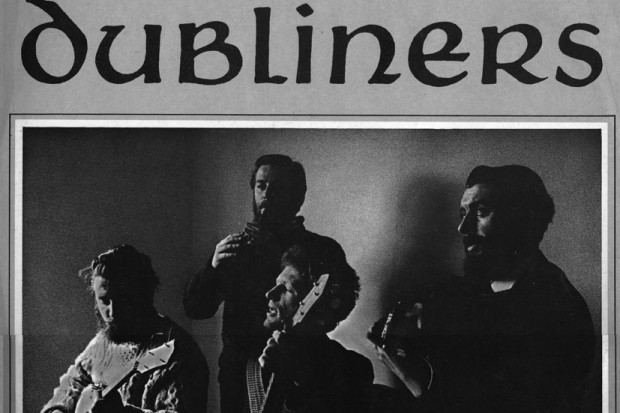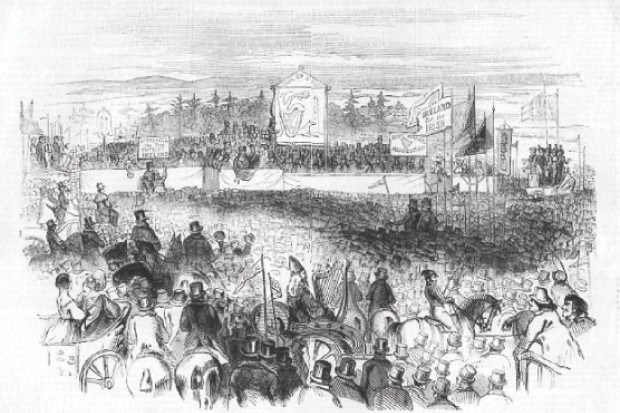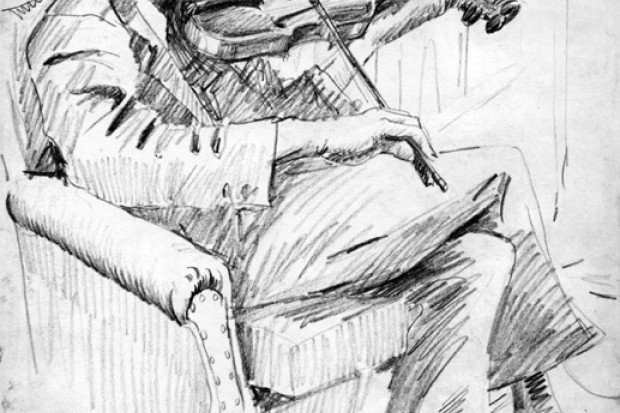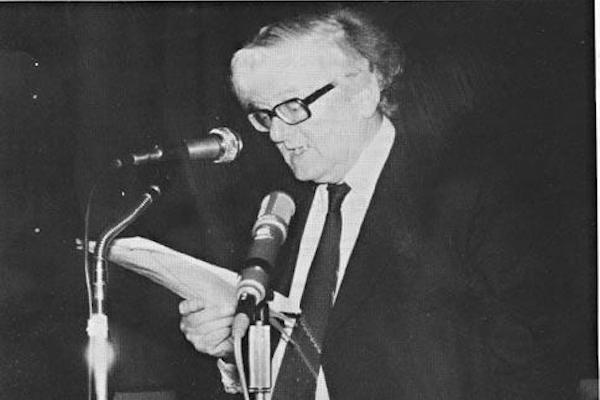
Breandán Breathnach
‘Because it's our own’: Breandán Breathnach 1912-85
I was influenced by Breandán Breathnach long before I ever met him. When I was a schoolboy – at secondary school in Drogheda in the 1960s – on a rare visit to Dublin I picked up in Walton’s music shop in North Frederick Street a little A5 magazine entitled Ceol. A Journal of Irish Music. This introduced me to the immediately fascinating world of Irish music scholarship. I was already entranced by the sounds and sights and the personalities of Irish traditional music, but Ceol revealed ways of thinking about traditional music, and studying it, and presenting it, that were absolutely new to me, but which struck a deep chord with, I suppose, my own nature.
Ceol, I learned from reading it, was edited, published, and substantially written by someone called Breandán Breathnach. In time I would get to know Breandán in Dublin and become friends with him, I would even write for Ceol, and would edit its final volume after his death, but in 1963 it was through the medium of print that I first heard his distinctive voice.
Breandán Breathnach – or Brendan Walsh as many people knew him – was born in Dublin in April 1912. He spent most of his professional life in the city as a civil servant, and he died there in November 1985 at the comparatively early age of 73.
Breathnach was a traditional musician – he played uilleann pipes and tin whistle. He was a collector of Irish traditional music – instrumental music chiefly, but he also took an interest in song and dance – and as a collector he ranks with Bunting and Petrie and Joyce and O’Neill and others. He was a scholar and an indefatigable researcher in libraries and among the performers in the field. He was an editor and publisher of traditional music. He was a lecturer on traditional music. He was a writer on traditional music – for his own publications and for those of others. He was an initiator and director of many projects, and he was in short a major authority on the traditional music of Ireland in his time.
Music circles
Breathnach was very much a Dubliner, born of Dubliners on 1 April 1912, and he was reared in Hamilton Street and Donore Avenue ‘in the liberty of the Earl of Meath’ in the old city of Dublin just south of the Liffey. His father Pádraig Breathnach was a notable figure in his own right as the last of the Dublin silk weavers. He was descended from a family that had been evicted from the Wicklow-Dublin border region in the 1820s and had come to Dublin city, and he had been involved in the nationalist political and cultural life of the early century. From him and from an uncle, Joe Breathnach, Breandán acquired an interest in the Irish language and Irish music especially that would stay with him all his life. Joe Breathnach had been a member of the old Dublin Pipers’ Club at the turn of the century which had as members such national figures as Eamonn Ceannt and pipers such as Nicholas Markey of Drogheda, and these figures were part of the Breathnach family folklore. Breandán’s mother, Julia Parker, died when he was young, and his father married again and had a second family.
Breathnach began music, on the warpipes, at an early age, but a recurring split lip caused him to change over to his uncle Joe’s uilleann pipes, and brought him into contact with a piper in the nearby Coombe, John Potts from Wexford. Potts became his first window on the country piping traditions of the previous century and it was to Potts that he dedicated his first major music collection. Another early piping teacher of his was William Andrews, who had been making commercial piping records from about the period of the First World War. Breandán later went as a pupil to the person who would epitomise uilleann piping nationally for some three or four decades in the middle of the century – Leo Rowsome. Rowsome played extensively on radio and on record, and at concerts up and down the country, and after his classes in Dublin it was his habit to give an impromptu recital for his pupils, so his was piping that Breandán would frequently have heard at first hand. He also learned uilleann piping from Br Gildas O’Shea, a de La Salle Brother from Kerry, and through him was in touch with a line of pipers back to Fraher, a famous Munster piper of about 1800. In the second half of the 1920s when Breathnach himself was still a teenager in school, James Ennis, father of Séamus, was also an important figure in piping and a frequent performer on the new medium of radio.
After education by the Christian Brothers in Synge Street on one of the first Corporation scholarships, Breathnach entered the Civil Service in 1930, and served for the rest of his professional life in the Departments of Posts and Telegraphs, Finance, Agriculture, and Education. Partly by nature and partly by training, he was very much the civil servant, down to the suit indeed, and he tended to approach music projects in a civil service style, that is to say, with plans, projections and costings on paper; with estimates of personnel required; with memos and meetings and minutes, and so on. More valuably, working in the state bureaucracy taught him how bureaucracies of all sorts worked, and enabled him to get results from civic and media and arts bureaucracies that his enthusiasm alone – which was very considerable – would not have produced.
Away from work Breathnach pursued his other interests: the Irish language, the history of Dublin weaving, and music. By keeping the company of Irish speakers in Dublin and by frequent visits to the Connemara Gaeltacht, he became indistinguishable from a native speaker of Galway Irish, even though his first visits to Connemara had bewildered him. He was a diligent reader and student of Irish. He was a great friend of the writer Máirtín Ó Cadhain until they had a falling out, and he collaborated with him in several projects, including the fair-copying of the manuscript of Ó Cadhain’s ground-breaking novel Cré na Cille. Other companions in Dublin were traditional musicians, both the Dublin pipers of his youth and musicians from the country who were settled in Dublin. Through the Potts’s who were family friends and through his Rowsome connection, he was in touch with traditional music circles in the city. Then in 1943 he married a fellow civil servant, Lena Donnellan from the deeply traditional area of Mullagh, Co Clare, with whom he would have five daughters. This marriage connection brought him into contact with Clare and musicians in Clare such as Willie Clancy.
The path to Ceol Rince
As musicians do, Breathnach made over the years a personal collection of tunes for his own use, and in the 1950s he conceived the idea of publishing a volume drawn from his manuscripts. The rise and revival of interest in traditional music which had been occurring in the Western world since the end of the Second World War had also by this time manifested itself in Ireland. Young people, in urban areas especially, who were drawn to traditional music but who had no regular first-hand access to practising musicians, were in need of published collections of dance music to enable them to participate in the tradition that they were coming into ecstatic contact with at fleadhanna ceoil and music sessions.
Conscious of this, Breathnach submitted a classified collection of dance tunes to An Gúm, the state agency for the publication of Irish-language materials including music. The names of the 21 contributors indicate his personal musical acquaintance at the time: pipers like his uncle Joe, John Potts, Tommy Reck, Matt Kiernan and Willie Clancy; fiddlers like John Kelly, Donncha Ó Cróinín, Tommy Potts and Tom Mulligan; whistle and flute players like John Egan, John Brennan and Michael Tubridy; and the major contributor, accordion player Sonny Brogan.
While waiting for the appearance of Ceol Rince Breathnach produced with Séamus Mac Mathúna of Cooraclare three numbers of his first collection Tacar Port from 1961 to 1962. This was sheet music containing dance tunes, and issued by the Clare County Board of Comhaltas Ceoltóirí Éireann. Breathnach had joined Comhaltas in the 1950s and served for a period as Assistant Secretary of the organisation. He began his connection with the opinion that the membership of Comhaltas nationally incorporated Irish traditional music, but he eventually resigned in disillusionment and remained implacably opposed to its leadership until the end of his life. He reserved some of his bitterest barbs for the hierarchy of the organisation, accusing it of being more interested in imagistics than in music. I think myself that he went too far, indeed far too far, with his excoriations. Without question there was validity in the substance of his attacks, but they were directed at the very imagistics he deplored, at the PR face of Comhaltas, and he rather threw the baby out with the bath water, in not stressing the positive aspects of CCÉ: the local branch activity, the teaching, the publications, and even the much debated competitions.
Another brief venture of the early 1960s was Spól, a record company for the publication of Irish music and language which he founded with his brother Ciarán of Avondale Studios, a Dublin commercial recording studio. The one music recording they issued was an EP called Seancheol ar an Sean-Nós featuring the Galway fiddle player Aggie Whyte and the Clare flute player Peadar O’Loughlin.
When the collection s, or Ceol Rince, as he usually called it, was published in 1963, it became a great commercial and artistic success, and made Breandán Breathnach’s name nationally known when he was fifty-one years of age. Up and down the country, and abroad, young people seized on it as a source of tunes, and it provided a common repertory of tunes for emerging musicians when they met at fleadhs or festivals. It also had the fascinating addition of notes on the printed history and oral sources of some of the tunes, and these shed a whole new light on the history of the music for many people. Ceol Rince 1 is still in print and still selling, as are its two companion volumes which appeared during his own lifetime and two posthumous volumes edited by Jackie Small.
‘From pigs to jigs’
In 1965, after rising to the rank of Assistant Principal Officer in the Department of Agriculture, Breathnach effectively abandoned his Civil Service career to undertake, under the auspices of the Department of Education, a task which, as he sometimes wryly said himself, would have been sufficient to occupy the scriptorium of a medieval monastery. The task was the making for publication of a complete collection of Irish traditional dance music. His work on Ceol Rince and his private reputation as an expert on Irish music, and the patronage of Seán Mac Gearailt, Secretary of the Department of Education, persuaded Dr Paddy Hillery, then TD for Clare and Minister for Education, later President of Ireland, to arrange for Breandán’s transfer to his Department, and it must be said to Dr Hillery’s great credit that he supported Breandán’s work in the teeth of a frenzy of civil service inertia, and indeed in some cases of malicious opposition. The newspapers noted the move from Agriculture to Education in a succinct phrase: he had gone, they said, ‘from pigs to jigs’.
Breathnach worked first in offices in Parkgate Street and then in Marlborough Street where the Department is situated, and it was a great turn-up for the books, and one that he would have relished to the full, that his daughter Niamh also occupied Department of Education offices in Marlborough Street after his death, but in her case they were the offices of the Minister. Breandán worked within the Department of Education for nine years, gathering printed collections of the music, and manuscript collections, and undertaking a programme of recording musicians throughout the country. These recordings he transcribed and indexed, and a selection of the transcriptions were published in the second volume of Ceol Rince, which appeared in 1976. This volume too met with a warm reception, not least for the inclusion of tunes such as polkas and slides, and of regional traditions such as those of Donegal, which had not been part of his world in the 1940s and 1950s. The 81 musicians the second volume brought to a now international public included James McEnery of Limerick, John Doherty of Donegal, Micho Russell of Clare, and Denis Murphy of Kerry.
Breathnach could not be said to have been as great an enthusiast for traditional song as he was for instrumental music, and indeed he had his hands full in dealing with the music, but he appreciated the value of song and he took steps to enable others to preserve it. And sometimes instrumental musicians were also singers, as Willie Clancy was. Breathnach’s personal song interests lay mainly in the unaccompanied Irish-language singing of Connemara, and in singers such as Seosamh Ó Heanaí. Conscious that traditional singing was disappearing at an even faster rate than traditional music, he agitated for the establishment of a national archive of Irish folk music and succeeded in having one established in embryo within the Department in 1972. He engaged Tom Munnelly and Seán Corcoran as English-language song collectors on a trial basis, and the harvest they reaped in a short period of time surprised them all.
But Breathnach’s activities within the Department of Education, in spite of their successes, were really anomalous. There was strain on all sides, and it was with relief all round that a plan was devised – provoked in the first instance by Dr Hugh Shields of Trinity College Dublin – to second Breathnach and the Department of Education collection to the newly established Department of Irish Folklore in University College Dublin. In 1974 he became Director of Irish Folk Music within that Department and remained there for almost three years. He later told his story in Ceol of how this work, so promisingly begun, came to eventual disappointment on his part, but he does not do justice to his own actual achievements there: the large amount of music and song recorded and preserved, the indexing of the music collected, and the supervising of collecting projects and academic dissertations. A major success was the song-collecting work of Tom Munnelly which transferred to the Department of Irish Folklore with Breathnach and continues there to this day. It is now the largest individual collection of English-language song to have been made in this country. While the work has been Munnelly’s, the empowerment was chiefly Breathnach’s.
Breandán Breathnach’s retirement in 1977 at the age of 65 as a Principal Officer of the Department of Education brought him to another fruitful period in his life, one which lasted for eight years. He became a columnist with the national music magazine Soundpost, a lecturer on Irish traditional music in the School of Music in Trinity College Dublin, and a member of the Arts Council. A continuing concern during these years was the establishment of a national archive of traditional music, and he was Chairman of the Council’s National Sound Archive Advisory Committee and author of its report.
Piping and writing
Of all Breathnach’s permanent concerns his chief obsession was piping. His family connections, his contact with his early teachers, and his subsequent study of piping made him a repository of piping techniques and piping lore. Although he rarely played in his latter years, he was a competent if not an outstanding player. His strength, rather than in playing, lay in his powers of analysis and discrimination, and these have borne fruit in meticulous music transcriptions and in his many studies of Irish piping. In 1968 when a gathering of pipers from all over Ireland was held in Bettystown, Co Meath, and a society of uilleann pipers founded, he was the obvious choice for Chairman, a position he held until his death. He organised tirelessly for the society, raised funds, edited and wrote copiously for its bulletin An Píobaire, and as a major legacy to his fellow-pipers he was chiefly responsible for the acquiring and restoration of the fine Georgian building at 15 Henrietta Street, Dublin, that acts now as headquarters of the society’s international membership, and provides a home for related musical activities. Many young pipers began to emerge in the period of his chairmanship.
When Na Píobairí Uilleann were asked in 1974 to assist with the piping element in the summer school set up in Miltown Malbay, Co Clare, to commemorate the piper Willie Clancy, Breandán was again to the fore, organising, criticising, improving. He was a familiar figure at every function there and its phenomenal success also owes much to his efforts. He contributed regularly to Dal gCais, the Clare journal associated with the Willie Clancy Summer School, and the journal published his pioneering monograph Dancing in Ireland. Breathnach’s wider musical interests were seen in his participation with the Folk Music Society of Ireland, of which he was a founder-member in 1971 and a committee member until his death. He was co-editor of its journal Irish Folk Music Studies – Éigse Cheol Tíre, wrote regularly for it and for the Society’s newsletter Ceol Tíre, and made many important and original contributions over the years to its programme of meetings.
Breathnach had remarkable gifts of language. His reading in Irish was wide, in English narrow, but in either he could write succinctly and memorably. His handbook Folk Music and Dances of Ireland (first published in 1971, with a revised edition in 1977, a Japanese edition in 1985, and a posthumous Irish-language edition in 1989), which is arguably his most important published work, shows to their best advantage his powers of expression and of synthesis, but even his most humble record review in the most ephemeral publication bears re-reading and pondering.
His magazine Ceol was specially important. He began it in 1963, the year I fell under its influence, and it ran for 22 years, irregularly. It was Breandán’s pulpit for his attacks on institutions like RTÉ and CCÉ and for the promotion of his vision. In its volumes will be found the characteristic features of his style: the aphoristic incisiveness, the wide range of reference, the particularity of reference, the humour, the pugnacious tone, the coat-trailing, the sturdy self-reliance, the enthusiasm utterly free from the cant that often bedevils writings on Irish music. To read him there is to hear him again in life. Ceol was also an outlet for material newly collected or for the reproduction of historical material. It provided an outlet too for other writers, and his own view was that it became a serious production when Hugh Shields began writing and reviewing for it.
Among the works uncompleted or unpublished at Breandán’s death was his monumental index of Irish traditional dance music on which he worked for almost thirty years. This is a thematic music index of the incipits or opening bars of Irish dance tunes, covering about 6,000 items, which by an ingenious system of analysis finds the full tunes in printed, manuscript or sound-recorded sources, and enables the researcher to find titles, related versions, printed history, distribution, and so on. The final version, compiled in his retirement, is now available to the public in the Irish Traditional Music Archive, founded two years after his death, which also inherited the bulk of his personal collection.
Seán Ó Riada, whose relationship with Breandán was somewhat distant and cautious, described Sonny Brogan, a friend and music source for them both, in words which seem to me to apply also to the complicated and sometimes contradictory personality of Breandán Breathnach. Ó Riada said: ‘As a person he was contentious, convivial, argumentative, loyal, dogmatic, witty, utterly reliable, a tiger when his temper was roused, and at the same time curiously… courteous’. I would add to this a word about Breandán’s generosity with his help to all comers – there was no means test for this as has been well said – his great generosity with his expertise, his time, his physical efforts. And there was also the great fun that there was to be had in his company – the gossip, the anecdotes and reminiscences, the jokes, and always to the end the new ideas and the new schemes.
Like any great man, Breandán Breathnach lives on vividly in the memory of those who knew him and inspires their undertakings. Many of his unfinished projects have been taken up and continued by his friends and colleagues: Jackie Small has published two further volumes of Ceol Rince na hÉireann, Hugh Shields the music of James Goodman, Terry Moylan the music of Johnny O’Leary, and Na Píobairí Uilleann goes from strength to strength world-wide. Through their work he continues to be productive in death as in life. And a personal loss is still felt, almost twenty years after he died of heart failure while crossing St Stephen’s Green on 6 November 1985. When the latest piece of petty criminality or sharp practice has manifested itself in the world of Irish traditional music, people still ask ‘I wonder what Breathnach would have to say about that?’, and they regret that the cutting truth of his words is no longer to be heard.
Based on the script of a programme in the RTÉ Radio 1 Millennium series A Giant at My Shoulder, produced by Marian Richardson and first transmitted 27 August 1999. The title of the article gives one of Breandán Breathnach’s own main motivations for his life’s work and an unfashionable ‘one compelling reason’ why Irish people should know their own music.
A seminar on the life and work of Breandán Breathnach will take place at the Willie Clancy Summer School in Miltown Malbay, Co. Clare, on Wednesday 6th July. Participants include Nicholas Carolan, Paddy Glackin, Pat Mitchell, Terry Moylan and Séan Potts. The Chairperson will be Peter Browne.
Published on 1 May 2005
Nicholas Carolan is Director Emeritus of the Irish Traditional Music Archive.












